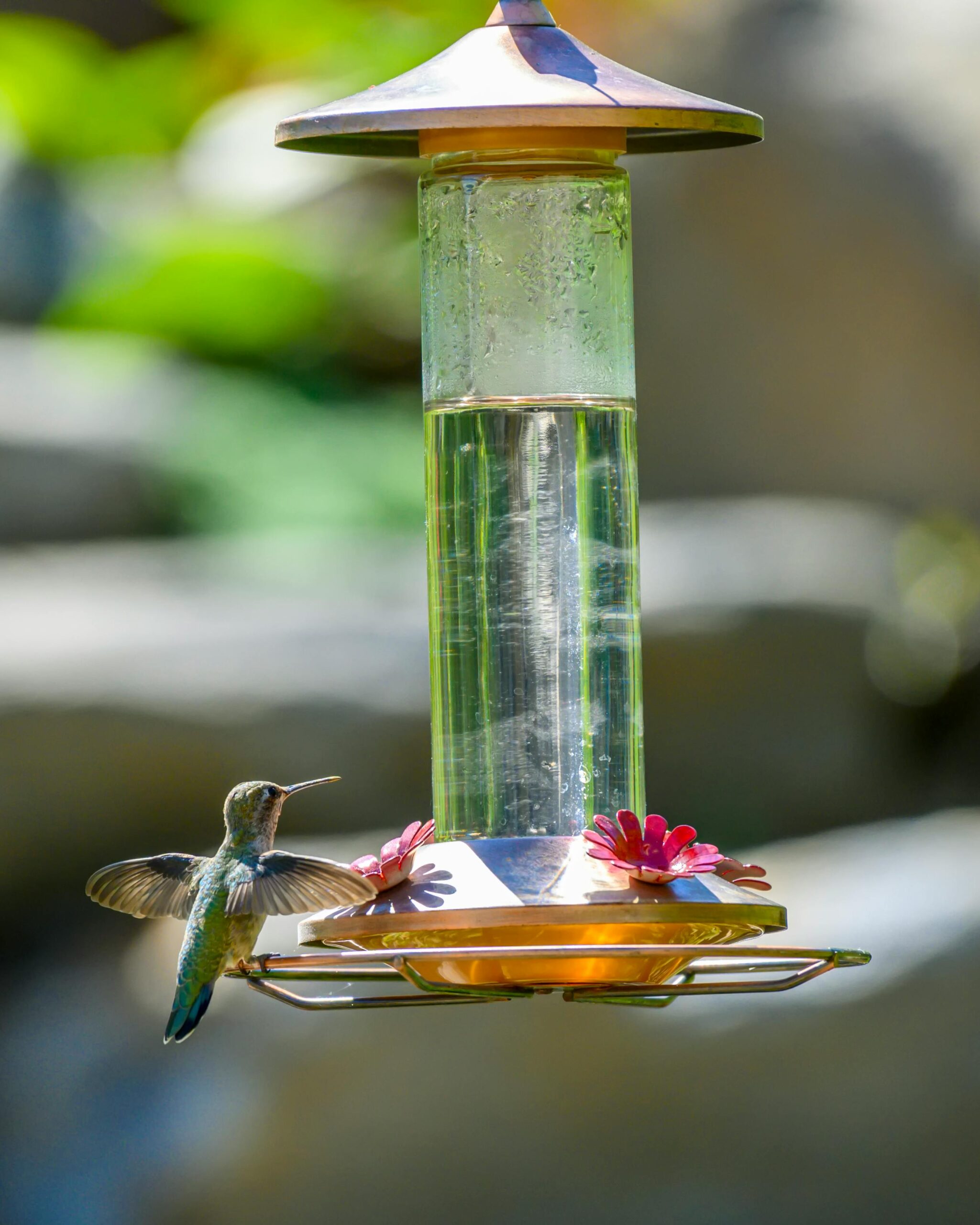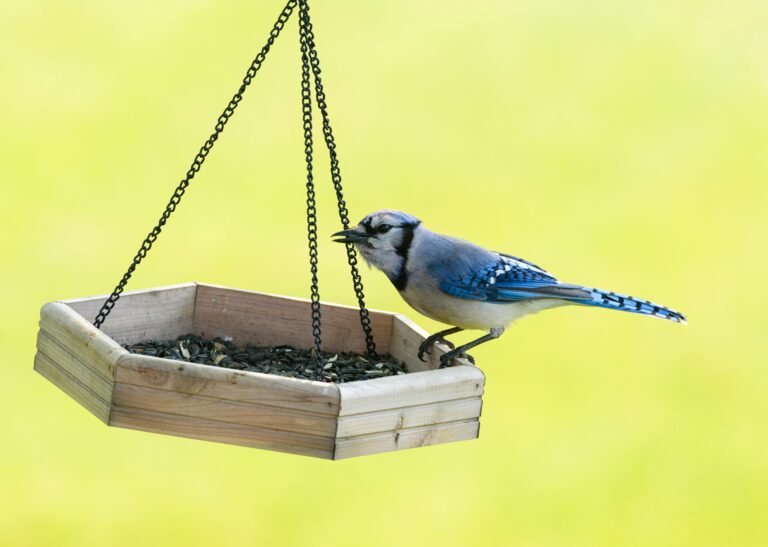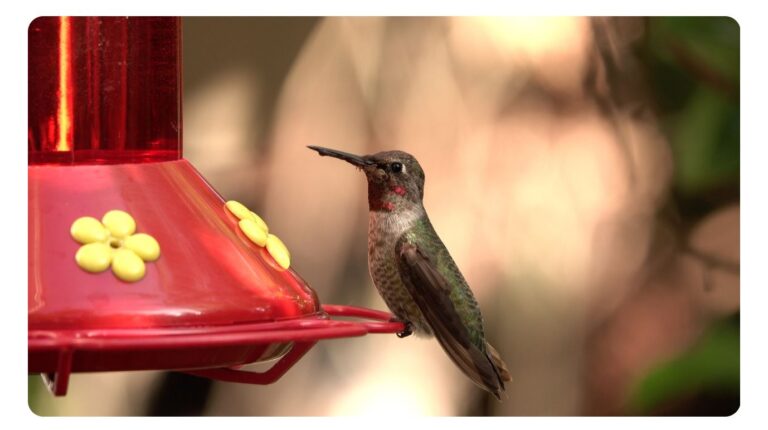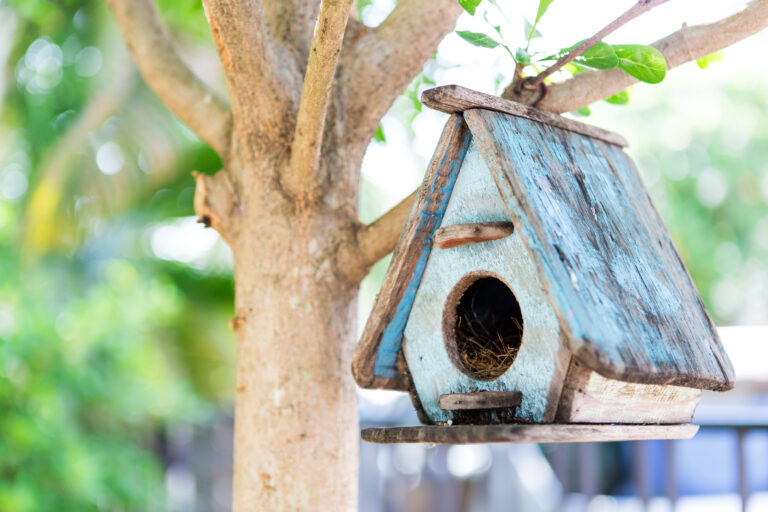How Do Bird Feeders Attract Birds? Unveiling Secrets
Bird feeders attract birds by offering food and a safe place to eat. They act as a beacon for various bird species, drawing them into our gardens and backyards.
Birds are a joy to watch. They bring color and life to any outdoor space. But how do we get them to visit? Bird feeders play a crucial role. They provide a reliable source of food, especially during tough seasons.
Different types of feeders can cater to different bird species, attracting everything from finches to woodpeckers. Understanding how these feeders work can enhance your birdwatching experience. It can also help you create an inviting environment for our feathered friends. Let’s explore how bird feeders attract birds and what you can do to make your yard a bird paradise.

The Allure Of Bird Feeders
Bird feeders hold a special charm for many nature lovers. They attract a variety of birds. Each feeder offers a unique experience. Observing birds can be relaxing and joyful. But what makes these feeders so appealing to our feathered friends?
Birds’ Search For Nutrition
Birds constantly seek food to survive. They need energy to fly and stay active. Different species prefer different foods. Some like seeds, while others enjoy fruits or nectar.
Bird feeders provide a reliable food source. They offer seeds like sunflower and millet. These are favorites among many birds. Providing food helps birds thrive in urban areas.
Sensory Appeal Of Feeders
Bird feeders attract birds through sight and sound. Bright colors catch their attention. Many feeders are designed in vibrant hues. This visual stimulation draws birds closer.
Sounds also play a role. The rustling of seeds can entice them. Birds are curious creatures. They investigate new sounds in their environment.
Feeder designs can enhance this appeal. Some mimic natural food sources. Others include movement to capture attention. This sensory experience makes feeders irresistible.
Key Factors In Feeder Attraction
Understanding what attracts birds to feeders is vital for birdwatching. Several key factors play a role in drawing these beautiful creatures. The right location and the variety of food offered can make all the difference. Let’s explore these factors in detail.
Location And Accessibility
The feeder’s location is very important. Birds prefer safe spots near trees or shrubs. These areas provide cover from predators. Place your feeder where birds can easily see it.
Accessibility matters too. Ensure the feeder is easy to reach. It should be at a height where you can refill it easily. Avoid placing it too close to windows to prevent accidents.
Variety Of Foods Offered
Different birds like different foods. Offering a variety increases your chances of attracting more species. Sunflower seeds, suet, and nectar are popular choices.
Mix it up to keep birds interested. Use feeders designed for specific food types. This helps attract specific birds. Variety keeps the feeding experience lively.
Impact Of Seasonal Changes
Seasonal changes greatly affect bird activity. Weather shifts influence food availability. Different seasons bring different birds. Each season has its own unique challenges.
Bird feeders play a key role in attracting these visitors. They provide a reliable food source. As seasons change, birds adapt their feeding habits.
Migratory Patterns And Feeder Visits
Many birds migrate to find better food. They travel long distances during spring and fall. Bird feeders attract these migratory birds.
During migration, birds seek food to refuel. Feeders stocked with seeds or suet help. Many species stop to rest and eat. This makes feeders vital during migration seasons.
Seasonal Dietary Needs Of Birds
Birds have different food needs in each season. In winter, they need high-energy foods. Sunflower seeds and peanuts are popular choices.
In spring and summer, birds need protein. They look for insects and larvae. Feeders with mealworms or suet attract these birds.
Understanding these needs helps bird lovers. Providing the right food increases feeder visits. This creates a lively scene in your backyard.
Feeder Design And Bird Preferences
Bird feeders attract a variety of birds. The design of the feeder plays a key role in this. Each bird species has its own preferences. Understanding these preferences helps create a more appealing feeder.
Shape And Size Considerations
The shape and size of the feeder matter. Different birds prefer different shapes. Here are some common types:
- Tube Feeders: Ideal for small birds like finches.
- Platform Feeders: Attract larger birds like doves.
- Hopper Feeders: Good for a mix of birds, offering shelter.
- Suet Feeders: Best for woodpeckers and nuthatches.
Size is also important. Larger feeders hold more seed. This reduces the need for frequent refills. Smaller feeders may attract specific birds.
Material And Safety Features
The material of the feeder affects durability and safety. Common materials include:
| Material | Benefits | Considerations |
|---|---|---|
| Plastic | Lightweight and easy to clean. | Can crack in extreme weather. |
| Wood | Natural look; blends into the environment. | May require regular maintenance. |
| Metal | Durable and resistant to pests. | Can heat up in direct sunlight. |
Safety features are crucial. Sharp edges can harm birds. Drainage holes prevent water accumulation. This keeps seeds dry and fresh.
Choosing the right feeder design helps attract more birds. Consider shape, size, and material for the best results.
The Role Of Color And Pattern
Colors and patterns play a big part in attracting birds to feeders. Birds see colors differently than humans. Bright colors can catch their attention. Patterns can also influence their choices. Understanding these aspects helps in choosing the right feeder.
Color Preferences In Birds
Birds are drawn to specific colors. Bright reds, yellows, and oranges stand out. These colors signal food sources. Many flowers and fruits share these vibrant hues. Blue and purple can attract certain species too. Birds may prefer colors based on their natural habitats.
Color can indicate safety and food. For example, yellow often means seeds. Red can signal ripe fruits. Using these colors in feeders can boost interest. It’s important to match colors to local bird species.
Patterns: Camouflage Vs. Attraction
Patterns also affect how birds see feeders. Some birds prefer bold patterns. Others may like softer, more natural designs. Bright, busy patterns can attract attention quickly. But they may scare off shy birds.
Camouflage patterns blend in with nature. They can help birds feel safe. These patterns may work better for cautious species. Finding a balance between eye-catching and safe is key. Choose patterns that fit the birds in your area.
Bird Feeder Maintenance
Maintaining bird feeders is essential for attracting birds. Clean feeders provide safe food. Regular maintenance keeps birds healthy and happy. It encourages them to visit often.
Keeping Feeders Clean
Clean feeders prevent the spread of diseases. Dirty feeders can harm birds. Here are some tips for keeping feeders clean:
- Wash feeders every two weeks.
- Use hot, soapy water.
- Rinse thoroughly to remove soap.
- Soak in a bleach solution for deep cleaning.
Always let feeders dry completely before refilling. This helps avoid mold growth. A clean feeder attracts more birds. They prefer fresh, healthy food sources.
Regular Refilling And Monitoring
Bird feeders need regular refilling. Check feeders often to ensure they have food. Here are some ways to manage refilling:
- Refill feeders at least once a week.
- Monitor seed levels daily, especially in winter.
- Keep an eye out for empty feeders.
Different birds have different food preferences. Use a mix of seeds to attract more species. Popular seeds include:
| Seed Type | Attracts |
|---|---|
| Sunflower Seeds | Cardinals, Chickadees |
| Nyjer Seeds | Goldfinches, Siskins |
| Peanuts | Nuthatches, Jays |
Regular refilling and monitoring help maintain a lively feeding area. Birds will return frequently for food. Healthy feeders mean happy birds.
The Influence Of Natural Food Sources
Bird feeders play a vital role in attracting birds. They provide food when natural sources are scarce. Understanding how these feeders complement birds’ diets helps in attracting a variety of species. Birds rely on natural food sources, but feeders can enhance their feeding options.
Complementing Birds’ Natural Diet
Birds eat many types of food. Some common natural food sources include:
- Seeds from trees and plants
- Berries and fruits
- Insects and larvae
- Nectar from flowers
Feeders can complement these natural foods. Here are some popular feeder options:
| Feeder Type | Best Foods | Attracted Birds |
|---|---|---|
| Tube Feeders | SUNFLOWER SEEDS | Chickadees, Nuthatches |
| Platform Feeders | SEEDS, BREAD CRUMBS | Sparrows, Doves |
| Nectar Feeders | NECTAR | Hummingbirds |
Using feeders helps during seasons when natural food is low. Birds can find reliable food sources easily.
Competition With Natural Habitats
Urbanization and farming have reduced natural habitats. This affects the availability of food. Birds face competition from other wildlife and humans. Feeders help by providing food in these changing environments.
Birds often struggle to find enough food in urban areas. This can lead to:
- Reduced bird populations
- Limited food options
- Increased competition
Feeders serve as a lifeline for many birds. They fill the gap left by lost natural sources. By placing feeders, you create a welcoming space for birds.
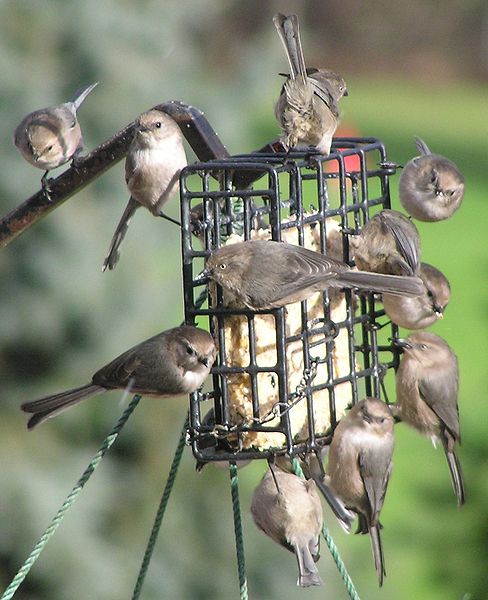
Creating A Bird-friendly Environment
Bird feeders can attract many birds. To enhance this attraction, create a bird-friendly environment. This means providing food, shelter, and water. By making small changes, you can invite more birds into your yard.
Landscaping For Bird Attraction
Landscaping is key for attracting birds. Use native plants in your garden. Native plants provide food and shelter. Here are some tips:
- Choose native flowers: They attract insects, a food source for birds.
- Add shrubs: They provide cover and nesting spots.
- Plant trees: Trees offer roosting and nesting areas.
- Create layers: Mix tall and short plants for diverse habitats.
Keep your garden free from pesticides. Chemicals can harm birds and their food sources. A safe garden encourages more birds to visit.
Water Sources And Shelter
Water is essential for birds. Install a birdbath to provide fresh water. Change the water daily to keep it clean. Birds need water for drinking and bathing.
Provide shelter with structures. Birdhouses can offer safe nesting places. Consider these options:
- Use different sizes for various bird species.
- Place houses in quiet areas away from predators.
- Install perches near feeders for easy access.
Cover your yard with natural shelters. Dense shrubs and trees can protect birds from weather and predators. A safe place encourages birds to stay and feed.
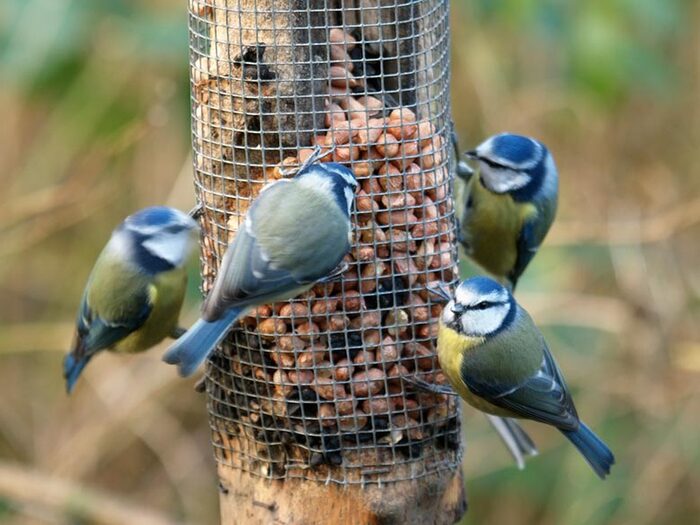
Frequently Asked Questions
How Do Bird Feeders Work To Attract Birds?
Bird feeders attract birds by providing a reliable food source. The types of seeds and feeder designs can appeal to different bird species. They create a safe environment for birds to feed, away from predators. This encourages birds to visit regularly, making your yard a bird-friendly habitat.
What Types Of Seeds Attract The Most Birds?
Sunflower seeds, safflower seeds, and millet are popular choices. Sunflower seeds attract a wide variety of birds, including finches and cardinals. Safflower seeds are favored by less aggressive birds. Offering mixed seeds can also entice various species, ensuring a bustling bird feeder.
How Can I Choose The Best Bird Feeder?
Selecting the best bird feeder depends on your target bird species. Tube feeders are great for small birds, while platform feeders attract larger ones. Consider durability and ease of cleaning. Opt for feeders that are squirrel-proof to minimize unwanted visitors and protect your feathered friends.
When Should I Put Out Bird Feeders?
It’s best to put out bird feeders in early spring and fall. During these seasons, birds are actively foraging for food. Keeping feeders stocked throughout winter provides essential nutrition during harsh weather. Regularly maintaining feeders ensures birds return consistently for food.
Conclusion
Bird feeders are a great way to attract various birds. They provide food and a safe place to eat. Different types of feeders appeal to different birds. Choosing the right seeds matters too. Watching birds can be a relaxing and enjoyable experience.
Make sure to keep the feeders clean and filled. This helps keep birds healthy and coming back. Creating a welcoming space for birds brings nature closer. Enjoy the beauty and sounds they bring to your yard. Set up a feeder today and watch your feathered friends flourish.

